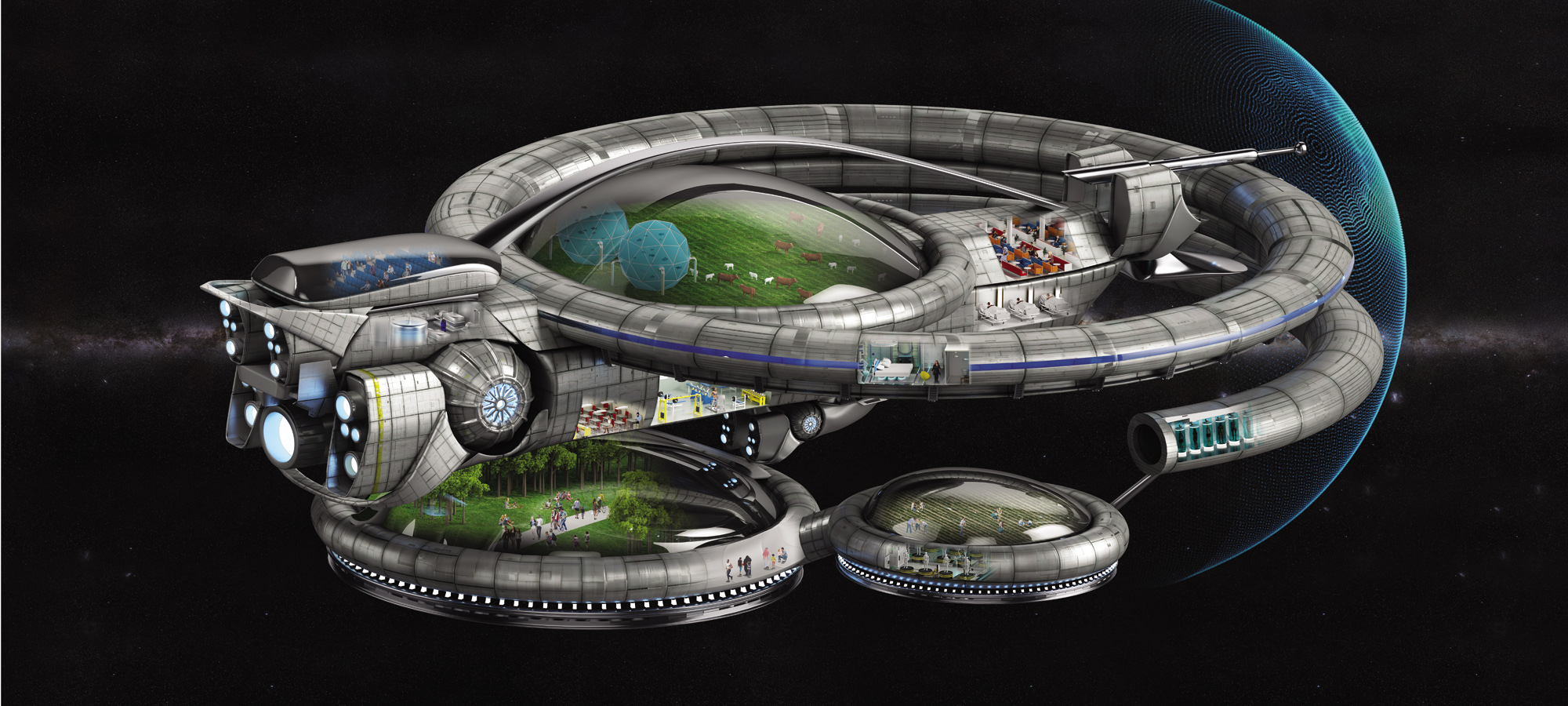

Proxima b, our nearest neighboring exoplanet, is almost 25 trillion miles away. Even one of our fastest spaceships—the 31,600-mile-per-hour New Horizons—would take hundreds of thousands of years to get there. Assuming we can’t figure out how to warp space-time (seems unlikely, but fingers crossed), we’re still looking at a couple-hundred-year trip in the best-case scenario, which leads to the real problem: No human crew could survive the entire ride. Science-fiction writers have long floated so-called generation ships as a solution. Designers would outfit these interplanetary cruise vessels to support a community of adults and their children, and their children’s children, and their children’s children’s children…until humanity finally reaches a new celestial shore. Here’s our best guess for what it would take to sow the seeds of an extrasolar species. Career planning Successive generations need to fill all the vital crew roles—such as medics and mechanics—which doesn’t leave much room for freedom of choice. A version of modern career tests would assign occupations based on aptitude, passions, and available jobs. Propulsion We’re gonna need a mighty push. So far, no one’s had any better ideas than Freeman Dyson: Slap A-bombs on the back of a ship and physically shove ourselves forward with constant nuclear explosions. It’s not safe or healthy, but it’s all we’ve got.

Waste management
A healthy human needs almost 300 gallons of water a year, and there won’t be any pit stops. We’ll need to reclaim every drop we use. The ISS already packs a system to recycle astronaut pee, which we’ll scale up to avoid surges of raw sewage from the tap.

Petting zoo
Fluffy and Fido are too great a luxury for space, but evidence suggests a small menagerie of animals could help our immune systems. Toddlers who roll around in pastoral dirt may develop fewer allergies. Besides, furry friends do wonders for mental health.
People
One study estimated a starting crew of 160 could maintain a viable population for 200 years, provided they were a diverse bunch. Large gene pools provide crucial variety—we wouldn’t want any two passengers closer than sixth or seventh cousins.
Infirmary
A spaceship might have almost no bacteria, or at least a different set than the terrestrial microbes we’re used to. Our immune systems could weaken, or forget how to fight earthly pathogens. Visiting the homeworld might not be an option.
Dating
To avoid the pitfalls of inbreeding, a geneticist will regulate reproduction. Perhaps romance and parenthood would decouple; folks could pick their spouses but use in vitro fertilization for makin’ babies with optimal partners.
Shielding
Earth’s magnetic field protects us from DNA-frying waves. Deep space is more radioactive than low-earth orbit, so we’ll need stronger shields than our current ships have. A force field would be nice, but asteroid clay could also make a nice protective coating.
Arrival plan
We might not know much about Proxima b when we lift off. Our crew needs to be prepared, so we’d want a bit of everything: mining equipment to glean gases for terraforming, weapons to protect us from hostile life-forms, plus tools to build new homes.

Frozen people
The crew can manage in a closed system for a couple of centuries, but speculators say it’ll take 20,000 souls to start a healthy population on a new world. One space-saving tip: Bring frozen embryos and people to diversify the gene pool upon arrival.
Farms
Two centuries’ worth of Spam sandwich fixin’s would weigh us down, so we’ll farm as we go. NASA is working on habitats to grow plants in space and are spec’ing out a system to turn poo into a fertilizer for cultivating protein-rich bacterial gruel (yum)
Self-propagating robots
What if Proxima b turns out to be a bust? We could hedge our bets by sending out self-replicating robots to fan out through the galaxy in ever-expanding networks. They’d spread on our behalf, eventually finding and preparing a home for us.
This article was originally published in the Summer 2018 Life/Death issue of Popular Science.
